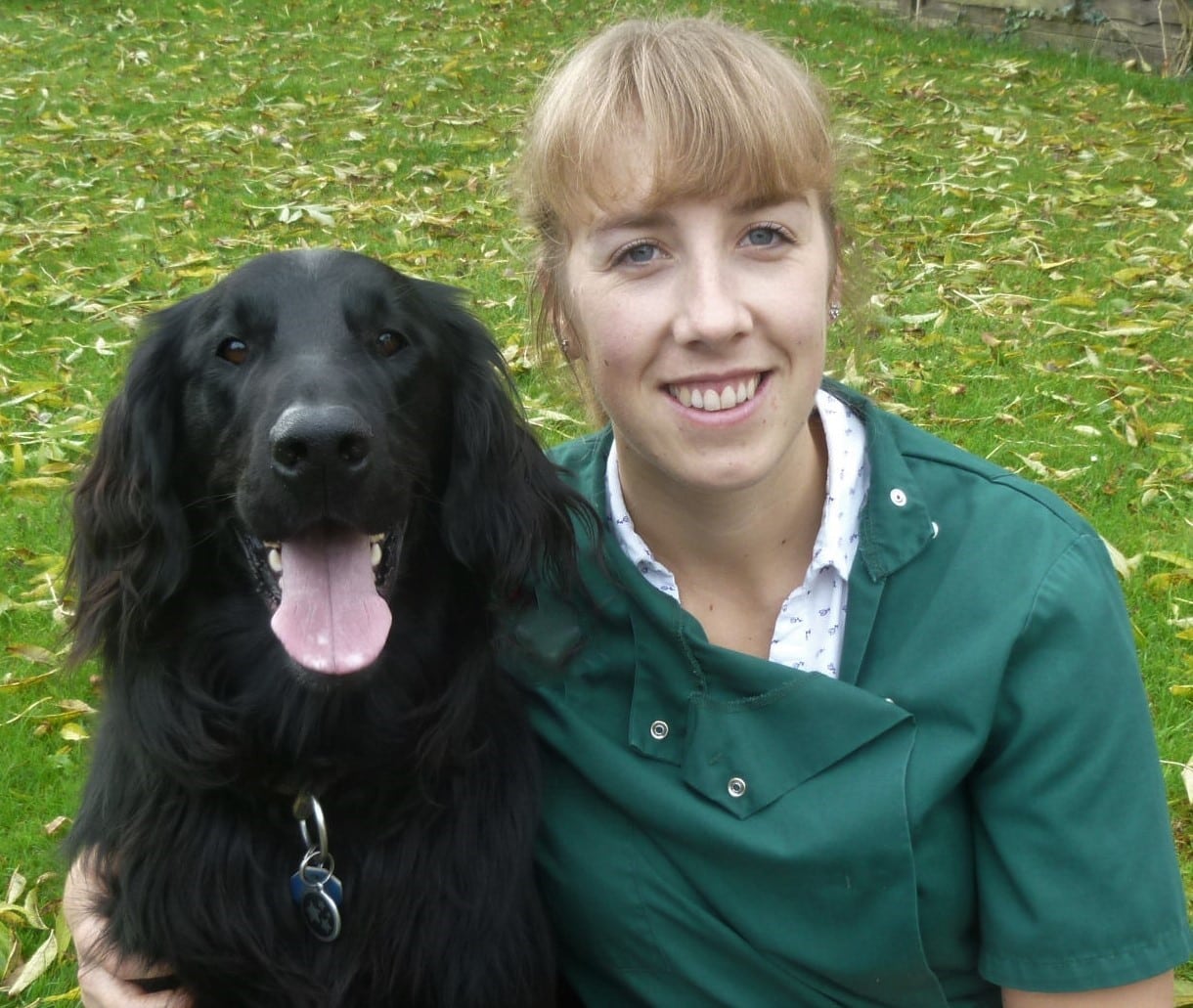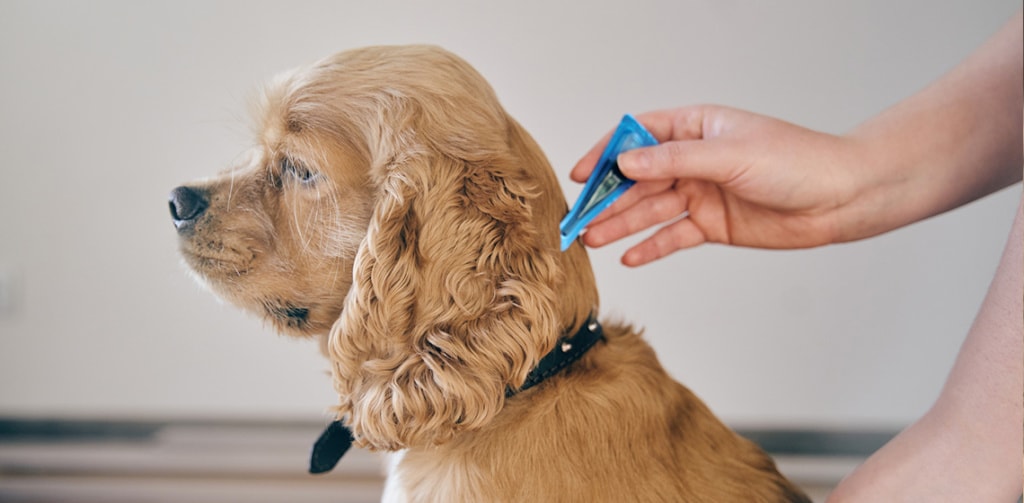Despite vet recommendations for regular parasite control, many pets still suffer from fleas. In a recent review, one scientist explains that understanding the flea life cycle is key to beating fleas once and for all. So, let’s take a look at the flea life cycle, and why good flea control is dependent on this knowledge.
Table of Contents
The Flea Life Cycle
Fleas are one of the most common parasites that vets see in practice, in particular Ctenocephalides felis (the cat flea). This can infect cats, dogs and rabbits as well as biting humans too, causing itchiness but also transmitting disease. There are different life stages that the flea goes through, which we refer to overall as the flea life cycle. Let’s look at each of these stages in turn.
Adults
Fleas are one of the most common parasites that vets see in practice, in particular Ctenocephalides felis (the cat flea). This can infect cats, dogs and rabbits as well as biting humans too, causing itchiness but also transmitting disease. There are different life stages that the flea goes through, which we refer to overall as the flea life cycle. Let’s look at each of these stages in turn.
Eggs
Female fleas can lay anywhere up to 50 eggs a day. These eggs are small, oval, and white. They roll and fall off the animal onto the ground where, in the right conditions, they hatch out into larvae within 2 to 12 days.
Larvae
Larvae are microscopic pale wriggly worms that crawl deep into cracks and gaps in their environment. This could be in the carpets or sofas of your home, between floorboards, or on the ground outside.
Here they feed in the dark on organic debris including skin flakes, other flea eggs, food particles and faeces from mature fleas that have fallen from your pet onto the floor. Flea larvae can also play a significant role in the tapeworm life cycle by accidentally ingesting tapeworm eggs whilst feeding on the ground.
Pupae
After a period of feeding and growth, the larva spins itself into a cocoon and turns into a ‘pupa’. Dust and debris stick to it, disguising it and making it hard to suck up through a vacuum. This sticky pupal cocoon can sit disguised in its environment, for weeks or months if required, until an animal passes by. The cocoon then hatches into an adult, and so the life cycle continues.
If an adult flea becomes separated from its host and source of food, it will only live a few days. However, immature stages of the flea life cycle will live in the carpet for much longer than this.
How long is the flea life cycle?
How long the flea life cycle is depends on whether the conditions are favorable to the fleas or not. Extremes of temperature and low humidity can cause them to slow down their development. Given optimum, warm, and humid conditions with pets passing regularly, then the time taken for an egg to develop into an adult flea is usually somewhere between 2 and 4 weeks in total. In some cases, it can take several months, with some experiments showing 22 weeks from egg to adult in unfavorable conditions. The cocoon or ‘pupae’ stage is the slowest stage of flea development, and mature fleas can stay in their cocoon for up to 12 weeks waiting for the best time to hatch.
Breaking the flea life cycle
Around 90% of the flea life cycle takes place in the surrounding environment and not on the pet itself. A flea infestation in the home can be tricky and will take time to get rid of but trying the following tips should help speed things along.
Step 1: Treating your pet
Ensure your pet has an effective parasite product given at regular intervals, as per the product’s instructions. This will kill any fleas that bite your pet and help to prevent further flea reproduction from occurring. Prescription flea treatments tend to be a bit more effective than many over the counter products so speak to one of our vets for advice on what might be best for your pet.
Step 2: Treating your home
Treat your home with veterinary-recommended chemical sprays to kill adult fleas, eggs, and larvae. This will reduce flea numbers in the environment drastically, but be aware that no products will touch the resistant pupal cocoon. Repeat treatments may be needed in some cases, but many products remain effective for 6-12 months. Follow instructions carefully, as these products can be toxic to pets and need applying carefully to be safe.
Step 3: Wait them out
The resistant pupae tend to survive all treatments, meaning there’s a reservoir of adult fleas just waiting to hatch when there’s a break in your protection. It’s important to continue to treat your pet with flea treatment for at least 12 weeks, as this will ensure that when they hatch, they hop onto your pet, encounter their flea treatment, and die before they have a chance to reproduce. It’s important to let your pet wander all around the house as normal during this time so that any hatching fleas land on him and quickly die.
Step 4: Speed them along as much as possible
You can speed things up and encourage pupae to hatch quicker by increasing the temperature and humidity in your home (damp towels on radiators and boiling kettles in rooms). Hot washing bedding also helps, as does lots of hoovering with the vibrations helping them to hatch faster.
Regular using an effective anti-parasite product on your pet is a key when dealing with fleas. Breaks in treatment could be just the time those fleas need to take hold…!
“Why is my flea treatment not working?” Common flea-killing mistakes
You may still see the odd flea hop on your pet from time to time, whether that is from a pre-existing problem in your home or a walk in the countryside. But if your pet has an effective preventative flea treatment then that flea will die and not reproduce, stopping the flea life cycle before an infestation can start.
Here are 6 common mistakes that explain why your flea treatment is not working:
- Not applying at the recommended dosing interval, meaning gaps in your pet’s treatment regime
- Using ineffective products, like herbal treatments or non-prescription medications
- Not giving the correct dose for your pet’s body weight (underdosing)
- Not following the instructions for correct application of the product
- Accidentally bathing your pet or allowing them to swim too soon before or after a topical flea treatment
- Not treating for long enough, meaning the pupal stage can hatch and start the cycle again.
Fleas are pesky creatures, and they can take time to get rid of once an infestation has taken hold! Try and stop this from happening in the first place by regularly using an effective anti-parasite product on your pet. Breaks in treatment could be just the time those fleas need to take hold…!
FAQ
If an adult flea becomes separated from its host and source of food, it will only live a few days. However, immature stages of the flea life cycle will live in the carpet for much longer than this. Larvae will feed for a few weeks in carpets before turning into a pupa, which can hide in its dormant state in the environment for several months in some cases.
The key is to use an effective flea product as recommended by your vet. You must use this as per the product’s instructions and apply it at the advised intervals. Patience is also key when dealing with fleas, eventually, you will get on top of the problem but waiting for all those pupae to hatch out can be frustrating!
Pupae can stay hidden in their environment for several months waiting for a host to pass by, triggering them to hatch. This means it’s possible to buy a house and inherit a parasite problem from the previous tenant’s pets, even if they moved out several months ago!
It can take a month or two to go through all the stages of the flea life cycle. You may still see the odd flea beyond this time, but their numbers will be drastically reduced. However, fully breaking the flea life cycle can take months.

Rebecca is a companion animal vet who has always had a passion for writing and client communication. Since her graduation from the Royal Veterinary college in 2009, she has gained a wealth of experience in first opinion small animal practice, in both clinical and managerial roles. She currently works in the South West and deals with a variety of routine and emergency appointments, but particularly enjoys medicine cases. Outside of work and writing, she enjoys spending time with her family, including her bouncy flat-coated retriever George!








